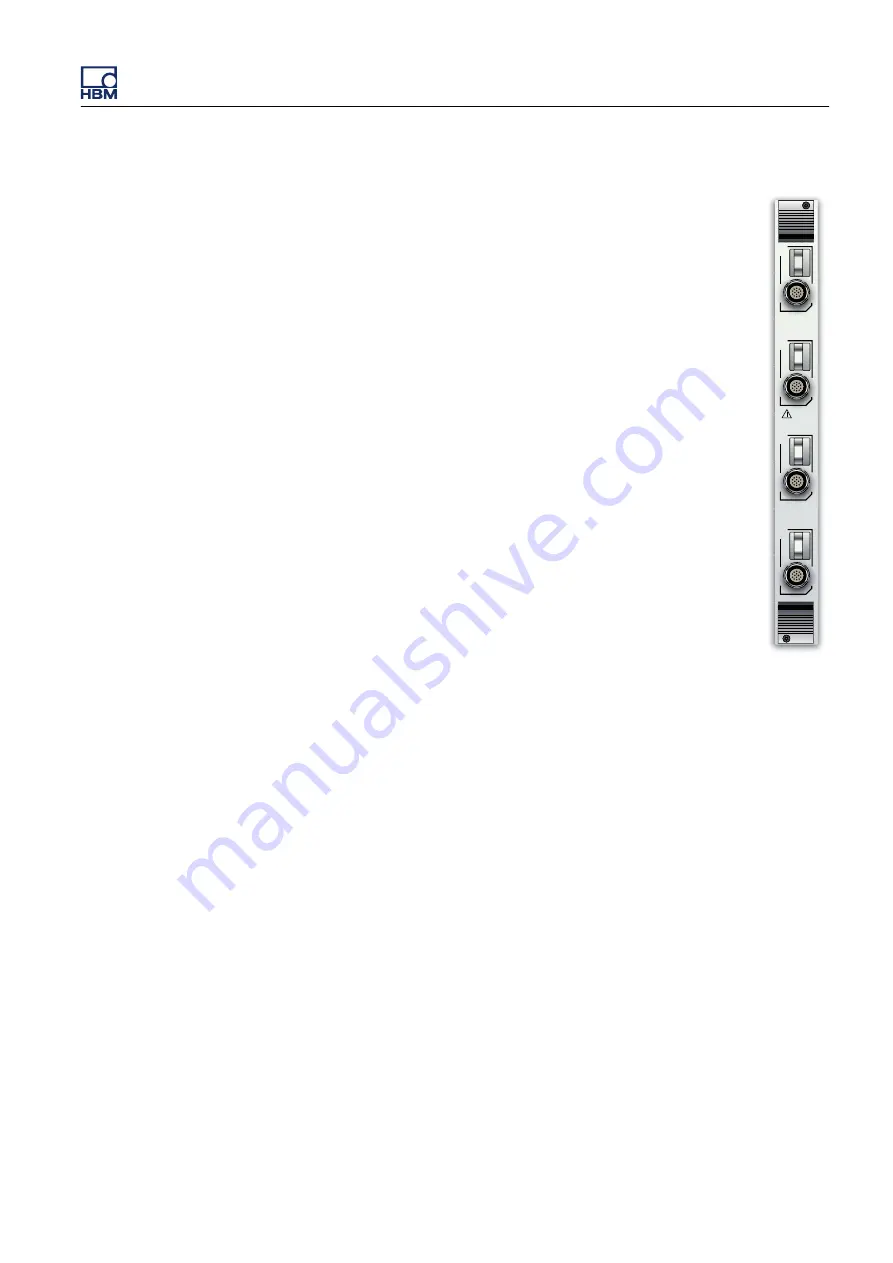
12.4
GN410 and GN411 Bridge input cards
The GN410 and GN411 bridge input cards are suitable for strain
gauges, strain
-
gauge based force, pressure or torque transducers
and piezo
-
resistive accelerometers. The inputs can also be used
as a general purpose low voltage differential amplifier with AC and
DC coupling. It provides bipolar DC excitation voltage or current,
flexible software
-
switched completion options and a variety of
calibration methods for any type of bridge configuration.
The type of front panel connectors is LEMO 2B. Every channel is
equipped with an independent high
-
gain amplifier, a seven
-
pole
Bessel and Butterworth anti
-
alias filters, a 16 bit Analog
-
to
-
Digital
converter operating at up to 1 MS/s, and digital filtering. All
channels are sampled at full speed with no multiplexing and almost
immeasurable crosstalk. A 200 kS/s model is available for medium
speed acquisition requirements.
The bridge amplifiers support quarter
-
bridge, half
-
bridge and full
-
bridge configurations from three to eleven wires. Each channel
includes software
-
switched half
-
bridge completion resistors, two
fixed shunt calibration resistors and one socket for an additional
shunt resistor provided by the user. A 350 Ω quarter
-
bridge
completion resistor is supplied for each channel, plus one socket
for an additional value supplied by the user. A unique and powerful ability allows
the amplifier to measure each input and each excitation individually, which
allows for a quick diagnosis of wiring problems. Each channel also features two
set
-
points for trigger or alarm purposes plus hardware detection of open/
shorted excitation leads and amplifier overrange.
For more information on the Bridge input card, please refer to "B2633–2.1 en
(GEN series GN410)" on page 400 and "B2639–2.1 en (GEN series GN411)"
on page 418.
12.4.1
Bridge amplifier configuration
Input diagrams and typical connection diagrams for the GN410 and GN411
bridge amplifiers are shown on this and the following pages. For the maximum
versatility, the amplifiers allow a wide range of configurations. A minimum of
three wires are necessary for a quarter
-
or half
-
bridge sensor and four wires for
a full bridge. Optional remote sensing of excitation voltage is supported for
precision transducer applications, which adds two wires. Remote shunt
calibration is possible with the addition of two or three more wires. Finally, both
an isolated common and a driven guard are provided for optional shielding.
1
2
3
4
10 MW 25Vpk
Isol. ≤25Vpk
GEN3i
I3763-3.1 en HBM: public
249
















































